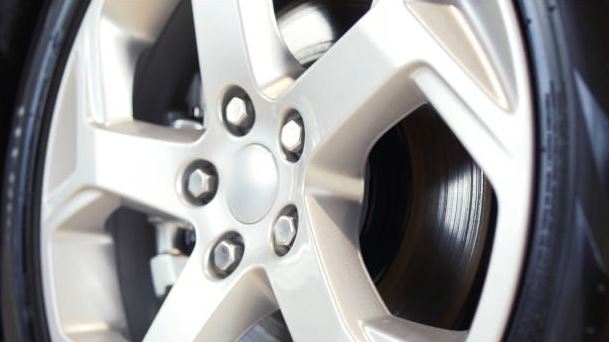If you own a vehicle with 17-inch rims but won 16-inch tires in a local charity raffle or mistakenly purchased the tire at a store, consider putting the 16-inch tire on your 17-inch rims. But now, you want to know how possible (and safe) it is.
I was once in that position, and I had to consult a technician for answers. Unfortunately, my findings made me look like someone with size 10 feet trying to put on a size 5 sneaker.
The answer is an unequivocal NO. It is nearly impossible (and unsafe) to put 16-inch tires on 17-inch rims. Tires are designed with steel belts that do not stretch, so even a 1-inch bigger rim would make a big difference. Furthermore, in an attempt to make the 16-inch tire fit, you may destroy it when you try to air it up.
By extension, this implies that you cannot put a smaller tire on a bigger vehicle rim. However, I have seen people be able to put smaller tires on a rim, which means there could be exceptions.
In the rest of this post, you will learn about the effect of putting a 16-inch tire on 17-inch rims (if you eventually decide to test the waters), the types of tire diameters that will fit into 17-inch rims, as well as answers to relevant FAQs I usually get from fellow gearheads.
Table of Contents
What Happens If You Put 16 Inch Tire on 17 Inch Rims?
It is critical to install the correct size tire on your vehicle’s rims. Tires that are too thin will have a problem holding up your car. Also, it would demand a lot of hard work to force the 16-inch tire onto the rims.
If you persist in such an endeavor, you should be prepared for potential risk scenarios. Just as too-tall tires can make your vehicle rollover (due to an increased gravity center), putting a smaller-size tire on 17-inch rims puts the tire’s longevity on the line.
Exceptions To When You Can Use 16-Inch Tires on 17-Inch Rims
Some tire shops will tell you that you can “possibly” put a smaller tire on a larger rim. But you have to consider these three technical questions before you make such a decision.
It might be possible to make this installation if you can confirm the following:
- Do your stock wheels have the same bolt pattern as the 16-inch wheels you have acquired? (for example, the bolts, bolts hole circle diameter, etc.)
- Some vehicles have large-diameter discs and will require large-diameter wheels. So check if the newly acquired 16″ wheels fit over your brake calipers and discs. ( With at least 1/4″ clearance)
- The 16″ tire must carry the vehicle’s load, not the wheel lugs. Hence, it needs to have the same size center hole that matches the diameter of the hub.
If affirmative about these technical factors, you can safely use the 16-inch tire on your 17″ rims since the 1-inch diameter difference won’t matter.
What Size Tires Can I Put On A 17″ Rim?
The most common and recommended tire sizes to put on 17-inch rims are 265/70R17, 225/65R17, and 215/55R17.
However, the smallest you can use is a 22″ tire (22/2.5R17) since they perform better for specific vehicles as drag wheels.
What Is The Difference Between 16 and 17 Inch Tires?
Wheel size is the lifeblood of driving comfort. While the 16-inch tires are designed with larger sidewalls to cushion the effects of sharp edges on the road, the 17-inch wheels perform better since they filter out road shocks.
So beyond the diameter differences, there is also a distinction in their comfort, design, and aesthetics.
Does Rim Matter For Tire Size?
Yes, the rim of your vehicle will ultimately determine the tire size to consider when shopping for tires.
If you are going to replace your rims or modify your tire size, you need to consider the width of your tire since it directly impacts your tire’s compact patch.
Pros & Cons of Putting 16″ Tires on Wider Rims
Benefits like progressive resistance to aquaplaning and improved driving in midwinter conditions are associated with putting thin tires on wider vehicle rims.
However, the drawbacks are reduced hold, longer braking distance, bad behavior on angles, and, worse, a blowout when inflated.
What About Putting Bigger Tires on 17″ Rims?
Using a bigger tire size on 17″ rims is not ideal because the tire may not snap onto the rim, making it lose.
Although you can use any tire size bigger than 17″ for a 17-inch rim, you have to ensure they can fit onto the rim without any lag. It all depends on what you mean by “bigger.”
The outside diameter of the tire doesn’t matter. So instead, focus on the size of the inside hole. If it’s bigger than the rim size, don’t fix it.
The best thing to do is consult the vehicle’s manual to see what tires fit your car best.
Last thoughts
The task of tire replacement isn’t left to the car shops alone. But if you fix a new set of tires onto your vehicle, you need to consider the internal hole size of the tire and match it with the rim’s width.
If you have a 17″, you need a tire with a 17″ hole in the middle. If, by all means, you need to use the 16-inch tire you’ve acquired, consider changing your vehicle’s rim size to match the new set of tires you have.
But it is often better to use tires that fit your current rims.
If you eventually got lucky in defying the odds and the 16-inch tire is working fine with your 17″ rims, that’d be a new meaning to “Stretch.”
Happy motoring!

